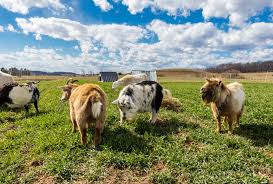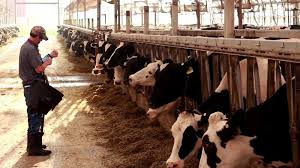The system of management of farm animals depends mainly on the intended scale of output, farmer’s convenience, financial base, and available physical resources, such as land and pasture. Thus, traditional farmers largely keep their animals on free range, which is cheap and requires little or no care thus allowing more time to be allocated to crop production.
However, more advanced and capital-intensive systems of livestock management evolved in response not only to increasing human demand for animal proteins, but also to meet the rising cost of living and urbanization.
There are four popular systems of managing farm animals, namely
1. Nomadic Herding
This is perhaps the first and oldest system of managing farm animals. It involves the movement of animals by the man from place to place in search of water and pasture.
Animals are thus exposed to various natural hazards and are therefore poorly productive. The droppings from the animals cannot be properly used as an organic fertilizer source for the farmer’s crops, due to the constant movement of the animals.
Also, the animals tend overgrazing natural pastures and destroy farmlands in their tracks. However, the system is simple and cheap to practice.
2. Free Range System

In this system, the animal farmer is settled in one area or village, while his livestock (especially cattle, sheep, and goats) is allowed to wander about either on their own or sometimes, under the supervision of a herdsman.
Occasionally, the animals are fed on farm or kitchen waste. In general, there is little or no care, and additional feed is rarely provided. The cost of production is low in terms of labor and cash investment, and therefore, stock production and quality are very low.
The animals are exposed to hazards like nomadic herding, resulting in very high losses and poor reproductive rates. Although the system is poor, unthrifty, and traditional, it is still widely practiced in many rural areas.
3. Semi-intensive System
This system can be regarded as the intermediate between the free range and intensive systems of livestock management. In this system, the farm animals are kept indoors part of the time where they are fed regularly and sometimes allowed to graze outdoors and fend for themselves in specially allocated pastures called paddocks.
4. Intensive System
This system is the extreme opposite of nomadic herding of farm animals. In the intensive system of livestock production, farm animals are kept under the most scientific management techniques, such as indoor housing all the time with optimum temperature, and balanced and precise feeding, for the maximum efficiency and output of the farm animals.
Although the system is very expensive and labor-intensive, it can be very profitable if properly managed. A typical example of intensive livestock management is the battery cage system of poultry production.
5. Ranching
This is the practice of raising grazing livestock such as cattle and sheep for meat or wool. It is also a method used to raise less common livestock such as elk, American Bison, or even ostrich and emu.
A ranch is an area of the landscape, including various structures, given primarily to the practice of ranching. Ranches generally consist of large hectarages but may be of nearly any size.
If the ranch includes arable or irrigated land, the ranch may also engage in a limited amount of farming, raising crops for feeding the animals, such as hay and feed grains.
Dude ranches are ranches that cater exclusively to tourists e.g. horseback rides, cattle drives, or guided hunting. Ranchers/stock growers are the people who own or operate a ranch.
Read Also: The Different Classes of Farm Animals

